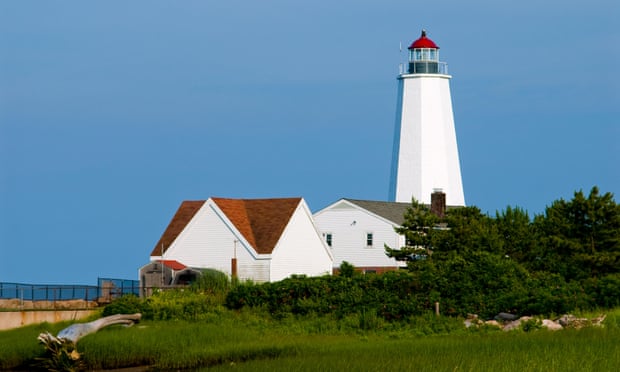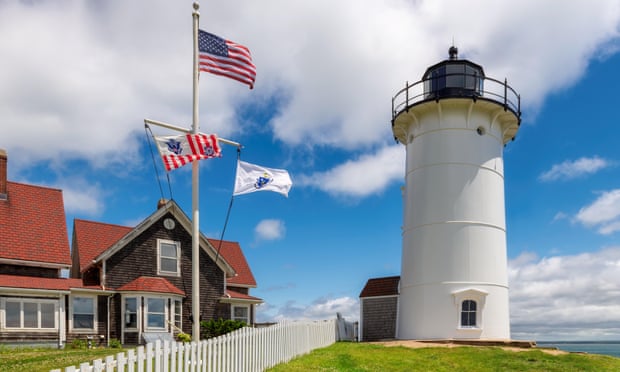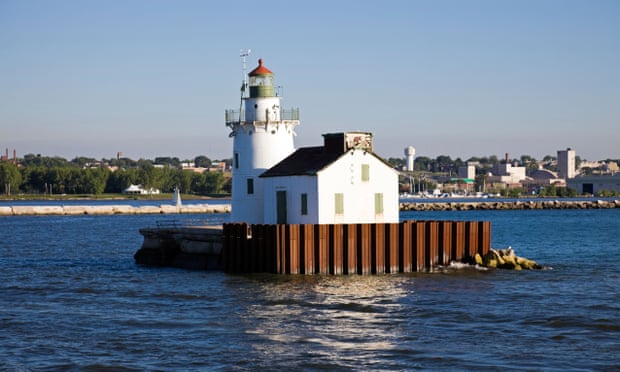US to give away free lighthouses as GPS makes them unnecessary
Ten lighthouses that for generations have stood like sentinels along America’s shorelines protecting mariners from peril and guiding them to safety are being given away at no cost or sold at auction by the federal government.
The aim of the program run by the General Services Administration is to preserve the properties, most of which are more than a century old.
The development of modern technology, including GPS, means lighthouses are no longer essential for navigation, said John Kelly of the GSA’s office of real property disposition. And while the Coast Guard often maintains aids to navigation at or near lighthouses, the structures themselves are often no longer mission critical.
Yet the public remains fascinated by the evocative beacons, which are popular tourist attractions, beloved local landmarks and the subject of countless photographers and artists, standing lonely but strong against tides and storms, day and night and flashing life-saving beams of light whatever the weather.
“People really appreciate the heroic role of the solitary lighthouse keeper,” he said, explaining their allure. “They were really the instruments to provide safe passage into some of these perilous harbors which afforded communities great opportunities for commerce, and they’re often located in prominent locations that offer breathtaking views.”
The GSA has been transferring ownership of lighthouses since Congress passed the National Historic Lighthouse Preservation Act in 2000. About 150 lighthouses have been transferred, 80 or so given away and another 70 auctioned, raising more than $10m.
This year, six lighthouses are being offered at no cost to federal, state or local government agencies, non-profits, educational organizations or other entities that are willing to maintain and preserve them and make them publicly available for educational, recreational or cultural purposes.
They include the 34ft-tall Plymouth/Gurnet Light in Massachusetts. The octagonal wooden structure dates to 1842, although a lighthouse has been at the site since 1768. A previous beacon at the site was staffed by America’s first female lighthouse keeper.
Kelly’s personal favorite is Warwick Neck Light, in Warwick, Rhode Island. The 51ft-tall lighthouse that dates to 1827 was an important navigation tool for mariners making their way to Providence.
“Warwick Neck is really at quite a prominent location up on a cliff overlooking Narragansett Bay,” he said. “That’s probably one that I would say that has a real ‘Wow’ factor when you get out and look at it.”
The other lighthouses being offered at no cost are Lynde Point lighthouse in Old Saybrook, Connecticut, Nobska lighthouse in Falmouth, Massachusetts, Little Mark Island and Monument in Harpswell, Maine, and Erie Harbor North Pier lighthouse in Pennsylvania.
“Some are already maintained by non-profits, and those agencies will have the opportunity to apply to continue doing do,” Kelly said.
If a new owner is not found, the lighthouse is offered for competitive bidding at auction.
The four lighthouses being sold at auction include Cleveland Harbor West Pierhead light, Ohio, a 50ft steel tower dating to 1911 that is only accessible by boat but has spectacular views of the city skyline.
The others are Penfield Reef lighthouse in Fairfield, Connecticut, Stratford Shoal light in the middle of Long Island Sound between New York and Connecticut, and Keweenaw Waterway Lower Entrance light in Chassell, Michigan.
Some past lighthouse sales have ended up with them converted into private residences.
Lynde Point lighthouse was constructed with a tall tower in Old Saybrook, Connecticut, to protect mariners along the marsh at low tide or from storms
Nobska Point lighthouse, Cape Cod, Massachusetts
Cleveland Harbor lighthouse
https://www.theguardian.com/us-news/2023/may/26/us-free-lighthouses-gps?utm_term=Autofeed&CMP=twt_gu&utm_medium&utm_source=Twitter#Echobox=1685108171







Post a Comment